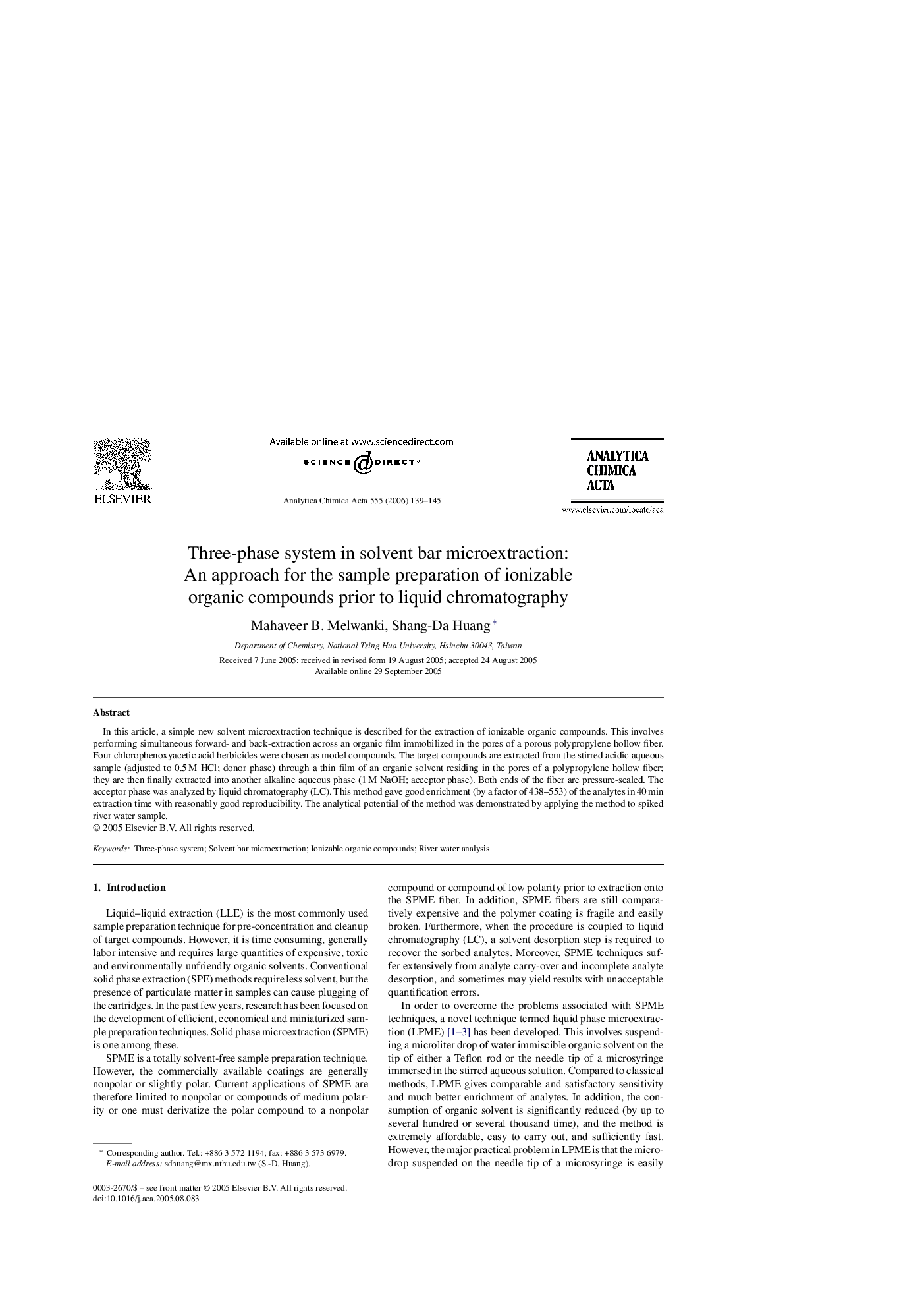| Article ID | Journal | Published Year | Pages | File Type |
|---|---|---|---|---|
| 1172623 | Analytica Chimica Acta | 2006 | 7 Pages |
In this article, a simple new solvent microextraction technique is described for the extraction of ionizable organic compounds. This involves performing simultaneous forward- and back-extraction across an organic film immobilized in the pores of a porous polypropylene hollow fiber. Four chlorophenoxyacetic acid herbicides were chosen as model compounds. The target compounds are extracted from the stirred acidic aqueous sample (adjusted to 0.5 M HCl; donor phase) through a thin film of an organic solvent residing in the pores of a polypropylene hollow fiber; they are then finally extracted into another alkaline aqueous phase (1 M NaOH; acceptor phase). Both ends of the fiber are pressure-sealed. The acceptor phase was analyzed by liquid chromatography (LC). This method gave good enrichment (by a factor of 438–553) of the analytes in 40 min extraction time with reasonably good reproducibility. The analytical potential of the method was demonstrated by applying the method to spiked river water sample.
